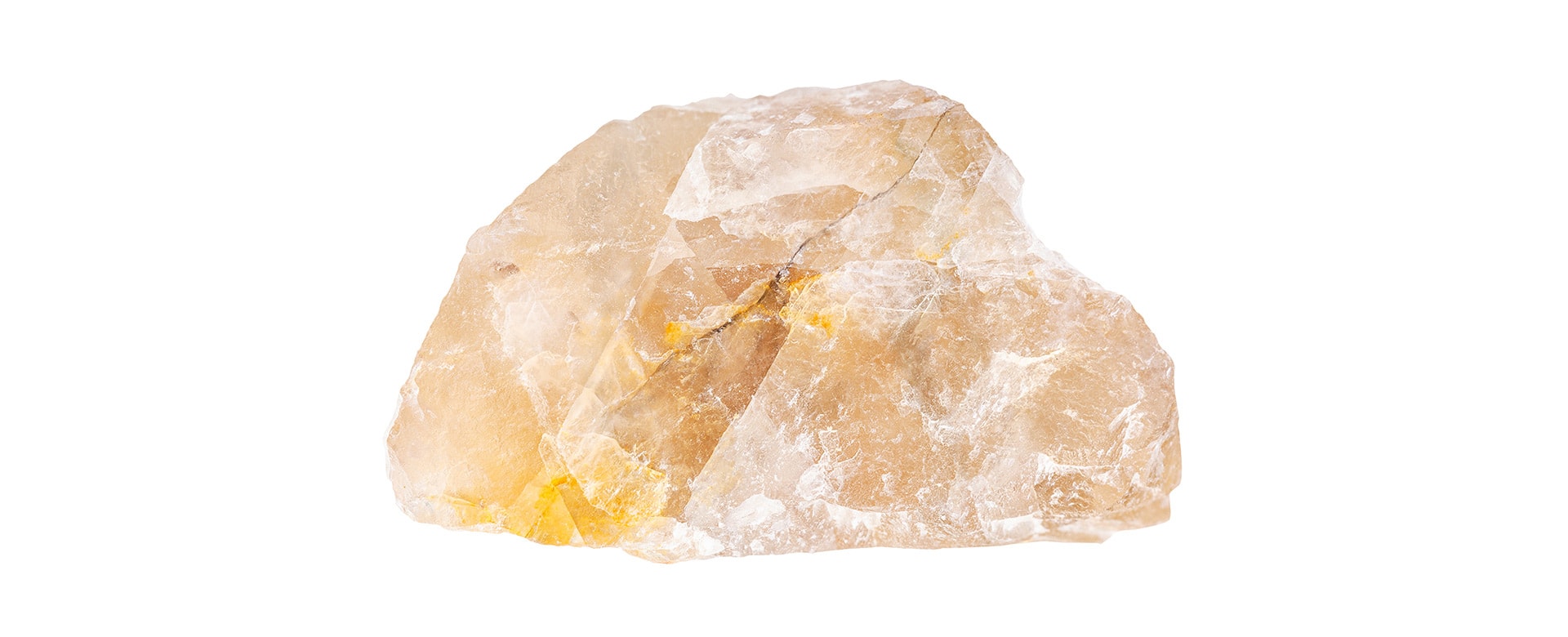Article Highlights
Fluorite, often referred to as “the most colorful mineral in the world,” is a vibrant and versatile mineral that has captivated the attention of individuals across various fields, from gem collectors and geologists to industrial manufacturers and optical equipment designers. This mineral, second only to quartz in popularity among collectors, is renowned for its wide spectrum of colors and its unique physical and chemical properties.
Fluorite, also known as fluorspar, is a halide mineral composed of calcium fluoride. It exhibits a range of colors from colorless and white to purple and blue, green, yellow, and even black. The diversity of its colors has earned it the title of the most colorful mineral in the world. But beyond its aesthetic appeal, fluorite holds a significant place in the industrial world as a powerful flux in smelting, a source of fluoride in hydrofluoric acid manufacture, and a key component in certain optical equipment due to its low dispersion properties.

The fascinating phenomenon of fluorescence was named after fluorite, as it was one of the first minerals in which this property was discovered. When exposed to ultraviolet light, many specimens of fluorite emit a vibrant glow, a characteristic that has made it a subject of interest in scientific studies.
Unveiling the Colorful World of Fluorite: A Journey Through Time
- The name ‘fluorite’ originates from the Latin word ‘fluere’, meaning ‘to flow’.
- Fluorite’s role as a flux in metal processing led to its discovery and use in the 16th century.
- The phenomenon of fluorescence was named after fluorite in the 19th century.
- The element fluorine was isolated from fluorite, marking a significant milestone in chemistry.
The Discovery: A Flux that Flows
Picture this: It’s the 16th century, and you’re a metallurgist trying to smelt ores into pure metals. You’re struggling because the ores just won’t melt properly. Then, you stumble upon a mineral that, when added to the mix, makes everything flow smoothly.

That’s exactly what happened to Georgius Agricola, a German mineralogist and metallurgist, who first described fluorite in 1530. He called it ‘fluorspar’, a name that still sticks around today when we’re talking about the industrial and chemical form of fluorite.
Fluorite: The Star of the Show
Fast forward to 1852, and enter Sir George Gabriel Stokes, a British mathematician and physicist. He’s playing around with a piece of fluorite and notices something extraordinary.

When he shines ultraviolet light on it, it glows with a beautiful blue color. This was the birth of the term ‘fluorescence’, named after our star, fluorite.
A Breakthrough in Chemistry
Then, in 1886, along came French chemist Ferdinand Frederic Henri Moissan.
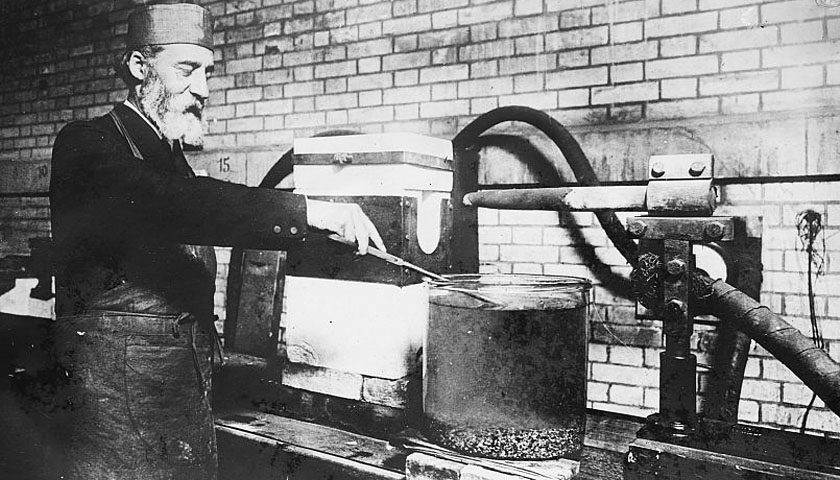
He managed to isolate the element fluorine from fluorite. It was a big deal in the world of chemistry, and guess what? Fluorine was named after fluorite too!
Fluorite Through the Ages
Throughout the ages, fluorite has been more than just a pretty face and a useful tool. It’s been a symbol and a remedy. In the 18th century, it was ground into a powder and mixed with water to treat kidney disease. The ancient Romans even thought that drinking from vessels made of fluorite could keep them from getting drunk.
Physical and Chemical Properties of Fluorite

- Fluorite is a halide mineral composed of calcium fluoride.
- It exhibits a wide range of colors, from colorless to black, due to various factors.
- Fluorite has several crystal habits, with the cube being the most recognized.
- It has a hardness rating of 4 on the Mohs scale, making it a relatively soft mineral.
A Symphony of Colors

Fluorite is a feast for the eyes. It’s like a rainbow trapped in a stone, displaying a spectrum of colors that can leave you spellbound. From colorless and white to purple and blue, green, yellow, and even black, fluorite has it all. But have you ever wondered what gives fluorite its stunning array of colors? It’s all down to impurities and exposure to radiation. Different impurities and varying degrees of radiation exposure can result in different colors. It’s like nature’s own art palette!
Crystal Habits: The Shape of Beauty
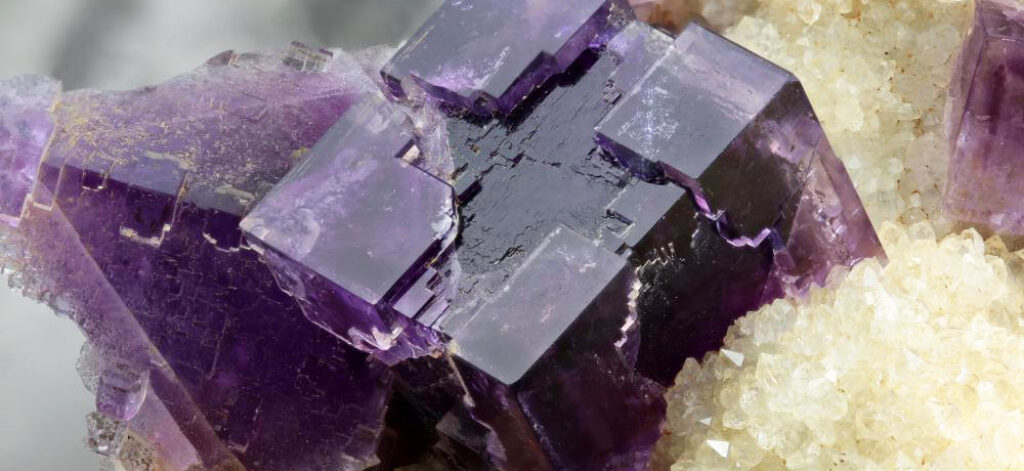
Fluorite isn’t just about colors; it’s also about shapes. Fluorite has several different crystal habits that result in well-formed clean crystals. The most recognized habit of fluorite is the cube. Imagine a perfect cube, with its sides all equal and its angles right, that’s what a cubic fluorite crystal looks like. The octahedron, a shape with eight faces, is another common crystal habit of fluorite. These shapes aren’t just beautiful; they tell us about the conditions under which the fluorite formed. For instance, octahedral fluorite is believed to form at higher temperatures than cubic fluorite.
Soft and Cleavable: The Nature of Fluorite
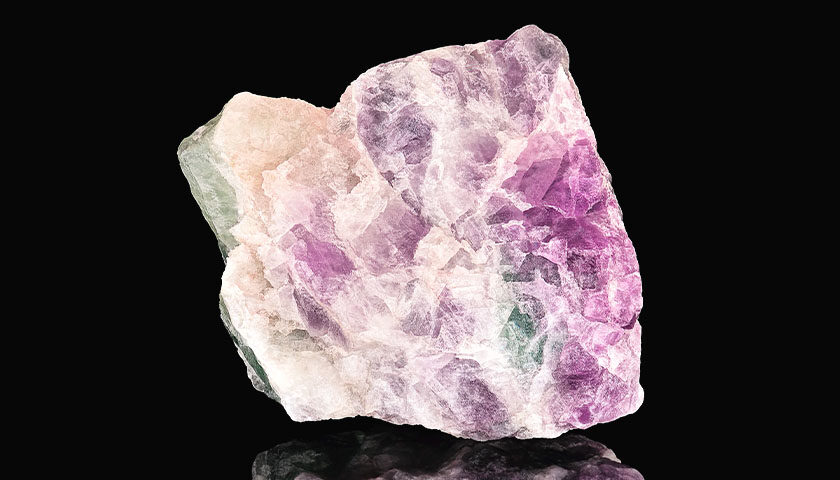
Fluorite is a relatively soft mineral, with a hardness rating of 4 on the Mohs scale. To give you some context, diamond, the hardest mineral, has a rating of 10. This means fluorite can be easily scratched by harder substances. But that’s not all. Fluorite also has perfect octahedral cleavage, which means it can be split along planes to form perfect octahedrons. It’s like nature’s own puzzle, waiting to be put together!
Fluorite and Fluorescence: Lighting Up the Mineral World
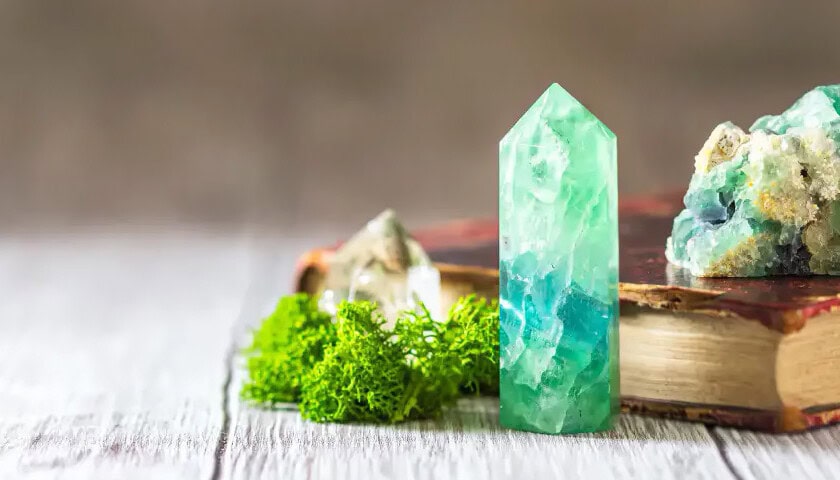
- Fluorite exhibits the property of fluorescence, where it emits light upon exposure to ultraviolet light.
- The term ‘fluorescence’ was derived from fluorite.
- The visible light emitted by fluorite can be blue, red, purple, yellow, green, or white.
- The fluorescence of fluorite is thought to be due to impurities in the crystal lattice.
The Dance of Light: Fluorescence
Imagine holding a piece of fluorite under ultraviolet light and watching it glow with a mesmerizing light. This is the magic of fluorescence, a property that fluorite exhibits beautifully. Fluorescence is the emission of light by a substance that has absorbed light or other electromagnetic radiation. It’s like a dance of light, where the fluorite absorbs the ultraviolet light and then releases it as visible light.
Fluorite: The Original Fluorescent Mineral
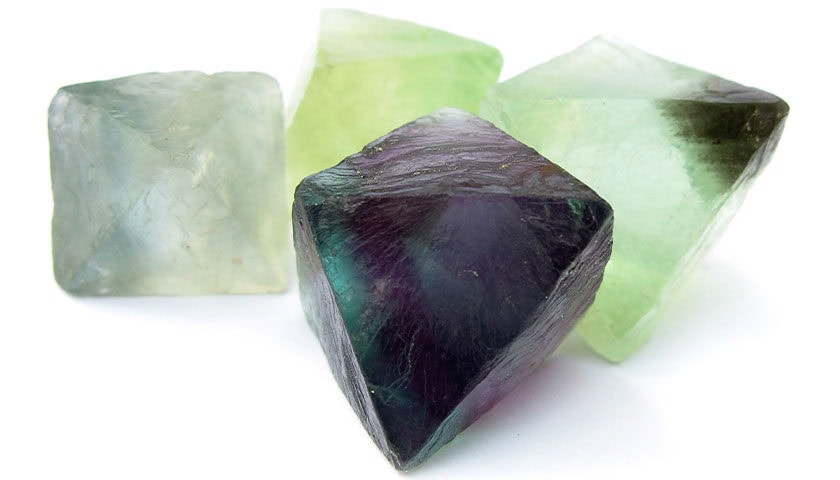
The term ‘fluorescence’ itself was derived from fluorite. In the 19th century, British scientist Sir George Gabriel Stokes observed that certain specimens of fluorite glow with a blue color when exposed to ultraviolet light. He named this phenomenon ‘fluorescence’ after fluorite, marking a significant milestone in the study of light and color.
A Spectrum of Fluorescent Colors

The visible light emitted by fluorite when it fluoresces can be blue, red, purple, yellow, green, or white. The color of the fluorescent light depends on the specific impurities in the crystal lattice of the fluorite. It’s like a light show put on by nature, with each piece of fluorite glowing with its unique color.
Impurities: The Key to Fluorescence

The fluorescence of fluorite is thought to be due to impurities in the crystal lattice. These impurities, such as yttrium or organic matter, can absorb the ultraviolet light and then re-emit it as visible light. It’s a fascinating process that adds another layer of intrigue to the already captivating world of fluorite.
Major Fluorite Deposits Around the World: A Global Rainbow
- Fluorite is found in various locations around the world, with major deposits in South Africa, Mexico, and China.
- China is the leading producer of fluorite globally.
- The geographical distribution of fluorite has implications for global trade and mineral politics.
A Global Mineral: Where Fluorite is Found
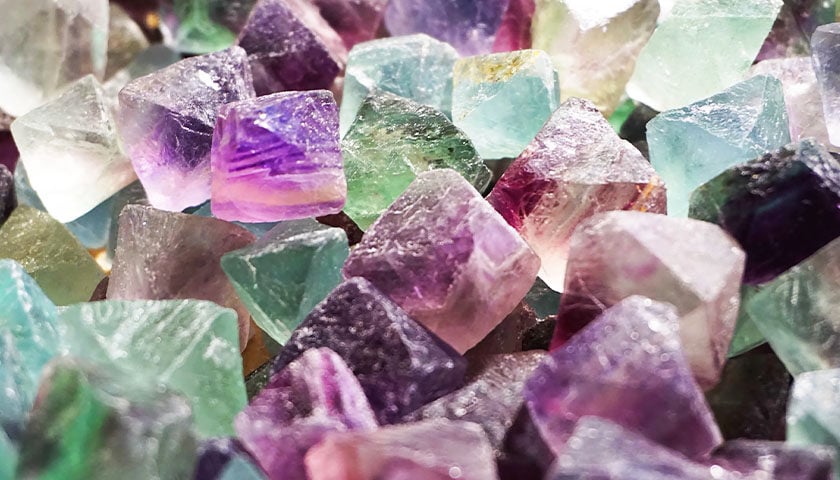
Fluorite, with its stunning array of colors, is a global citizen. It’s found in various locations around the world, from the southern tip of Africa to the vast landscapes of China and the diverse terrains of Mexico. Each deposit has its unique characteristics, adding to the rich tapestry of fluorite’s global presence.
China: The Fluorite Powerhouse
When it comes to fluorite production, China is the undisputed leader. It’s like the heart of the fluorite world, pumping out significant quantities of this colorful mineral. The vast mineral resources and extensive mining operations in China contribute to its leading position in fluorite production.
South Africa and Mexico: Key Players
South Africa and Mexico are also key players in the fluorite world. They boast significant fluorite deposits, contributing to the global supply of this vibrant mineral. From the rich mineral landscapes of South Africa to the diverse geology of Mexico, fluorite finds a home in various corners of the world.
Fluorite as a Gemstone: The Rainbow Stone

- Fluorite is appreciated as a gemstone for its remarkable range of colors and attractive vitreous luster.
- Most fluorite gemstones have a single color, but some have multiple colors arranged in bands or zones.
- Fluorite is a relatively soft stone, rating only 4 on the Mohs scale, making it suitable for certain types of jewelry.
A Gemstone Like No Other
Imagine a gemstone that captures the colors of the rainbow, a stone that can be purple, blue, green, yellow, or even colorless. That’s fluorite for you, a gemstone like no other. Its remarkable range of colors and attractive vitreous luster make it a favorite among gem enthusiasts. Each piece of fluorite is a unique creation of nature, a colorful masterpiece that can take your breath away.
A Symphony of Colors
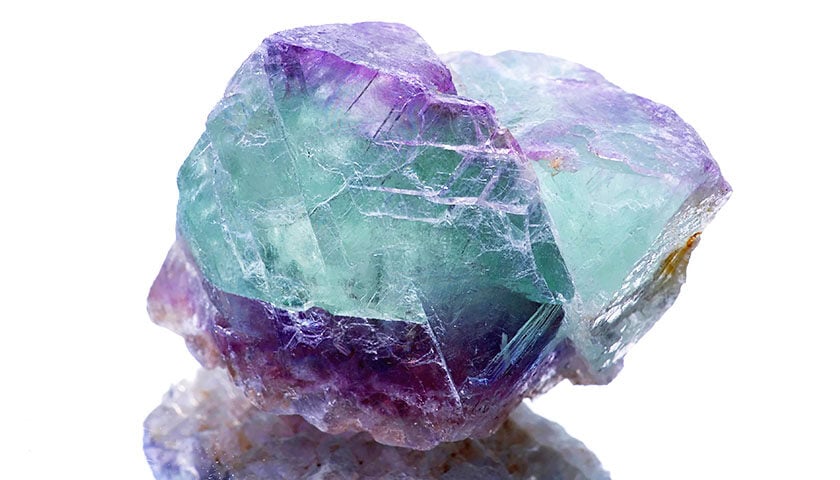
Most specimens of fluorite have a single color, but some fluorite gemstones break the mold. They have multiple colors arranged in bands or zones, creating a stunning visual effect. It’s like a symphony of colors, with each band playing its part in the overall beauty of the stone. From bands of rich purple to streaks of vibrant green, multi-colored fluorite gemstones are a testament to nature’s artistic prowess.
Soft and Beautiful: Fluorite in Jewelry
Despite its softness, fluorite has carved a niche for itself in the world of jewelry. With a hardness rating of 4 on the Mohs scale, it’s a relatively soft stone. While this means it’s not suitable for all types of jewelry, it finds its place in pendants, earrings, and brooches. These pieces of jewelry don’t face the same level of wear and tear as rings or bracelets, making them the perfect home for this beautiful, soft stone.
Varieties of Fluorite
Fluorite, a mineral that dances with a spectrum of colors and forms, is a true marvel of the natural world. Its captivating beauty and unique properties have made it a favorite among mineral enthusiasts and gemologists alike. In this chapter, we’ll embark on a journey to explore some of the most fascinating varieties of fluorite: Blue John Fluorite, Yttrofluorite, Antozonite, and Chlorophane.
1. Blue John Fluorite
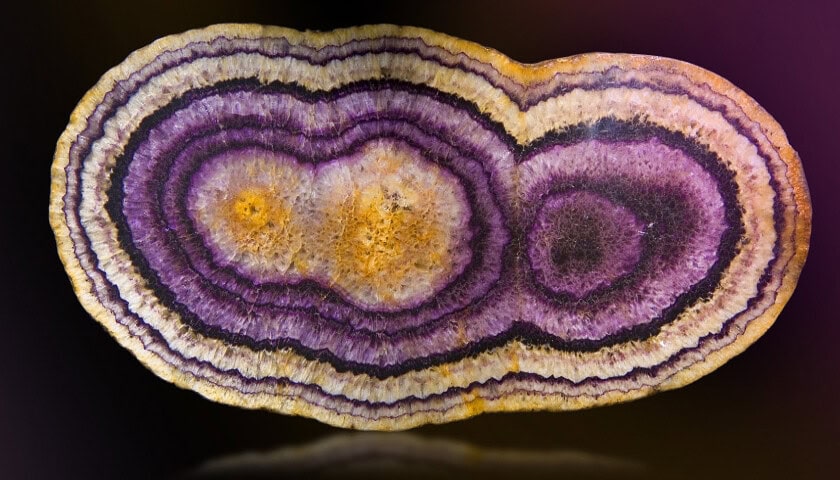
Imagine stepping into a subterranean world, where the walls are adorned with a mineral that glows with an ethereal, banded purple-blue light. This is the experience of encountering Blue John Fluorite, a unique variety found only in the caverns of Derbyshire, England. The bands of color in Blue John Fluorite range from deep indigo to soft lavender, creating a mesmerizing visual effect that has been cherished for centuries. This variety of fluorite is so unique and sought after that it has been used in ornamental pieces and jewelry, adding a touch of natural elegance to any collection.
2. Yttrofluorite
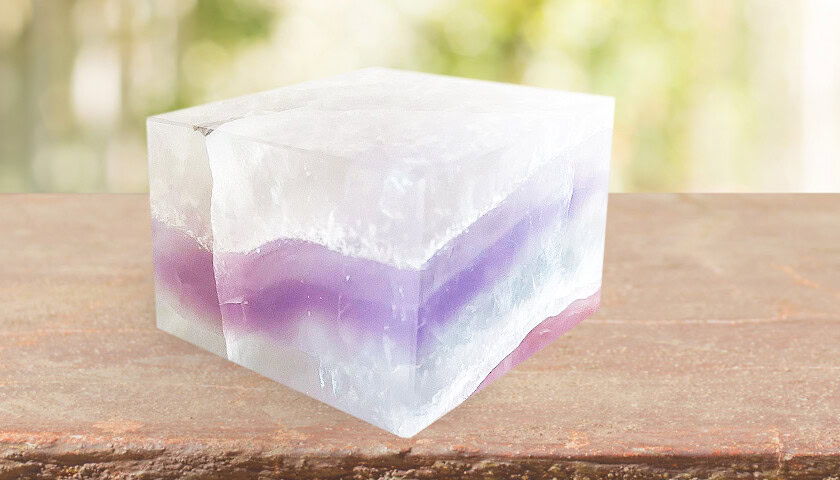
Next, let’s journey to the realm of Yttrofluorite. This variety of fluorite is a bit of a rebel in the mineral world. It contains a small amount of yttrium, a rare earth element, replacing some of the calcium in the crystal structure. This subtle change results in a mineral that is similar to common fluorite, yet distinct. Yttrofluorite is a testament to the incredible diversity and adaptability of nature, demonstrating how even a small change can create something new and exciting.
3. Antozonite
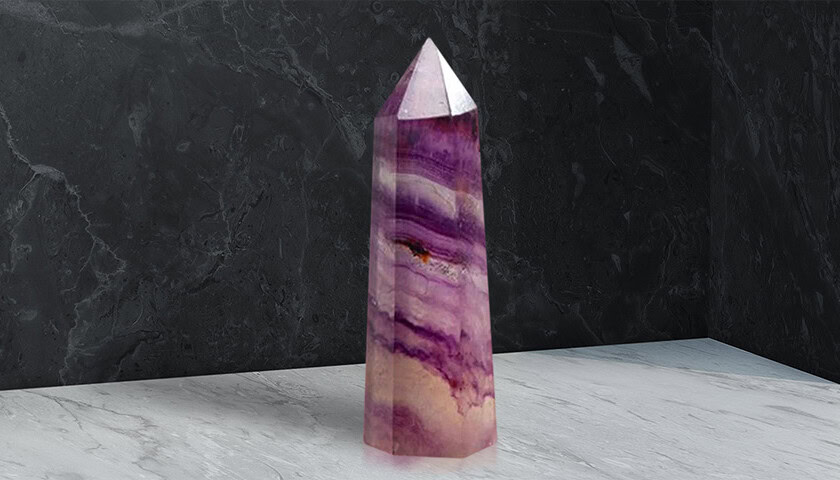
Our exploration continues with a variety that is as intriguing as it is peculiar: Antozonite, also known as “Stinkspar”. This variety of fluorite is a bit of a prankster in the mineral world. When crushed or fractured, it releases an odor due to the presence of elemental fluorine. Despite its unusual characteristic, Antozonite is a fascinating specimen. Its dark violet to black coloration, often with a greenish tint, adds an air of mystery and intrigue. This variety of fluorite is a reminder that nature often has a few tricks up her sleeve, and not everything is as it seems.
4. Chlorophane
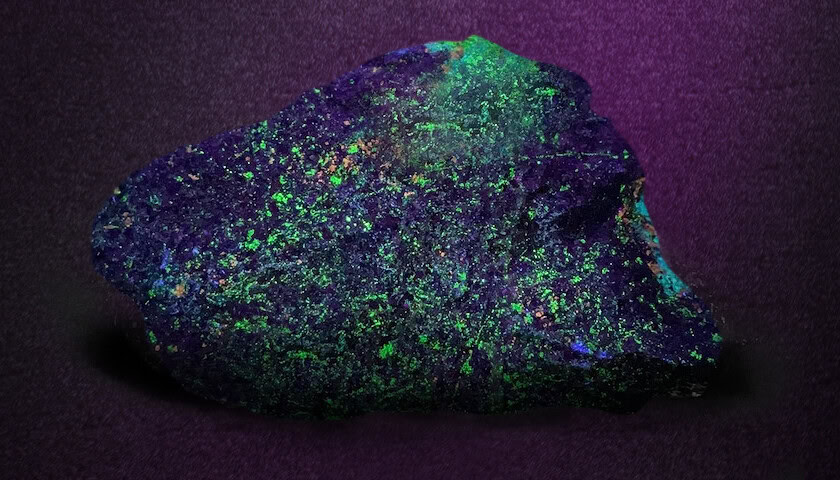
We arrive at Chlorophane, a variety of fluorite that truly knows how to put on a show. This mineral is thermoluminescent, meaning it emits light when heated. Imagine holding a piece of Chlorophane in your hand, watching as it begins to glow with an eerie green light as it warms. This captivating display is a testament to the incredible properties that minerals can possess. Chlorophane is a beacon in the mineral world, a shining example of the magic that can be found in the Earth’s crust.
5. Color Change Fluorite
Imagine a chameleon, its skin shifting hues to match its surroundings. Now, picture a gemstone with the same enchanting ability. Meet Color Change Fluorite, a variety that can change its color based on the lighting conditions. Under the bright daylight, it may appear a cool, serene blue, but under incandescent light, it transforms into a vibrant, royal purple. This captivating characteristic makes Color Change Fluorite a living piece of art, a gem that adapts and transforms, reflecting the ever-changing world around it.
6. Green Fluorite

We venture into the verdant world of Green Fluorite. This variety is a breath of fresh air, a piece of the lush forest captured in a crystal. The color can range from a light, almost translucent green to a deep, rich emerald hue. Often associated with growth and renewal, Green Fluorite is a reminder of the resilience and ever-changing nature of life. It’s like having a piece of springtime, forever encapsulated within a crystal.
7. Purple Fluorite

Our journey continues with Purple Fluorite, the most common variety of fluorite, yet no less spectacular. Its color can range from a light lavender to a deep, royal purple. Often associated with spiritual wholeness and development, Purple Fluorite is a testament to the depth and beauty that can be found in the most common of places. Each piece is a royal treasure, a piece of the twilight sky forever captured within a crystal.
8. Rainbow Fluorite
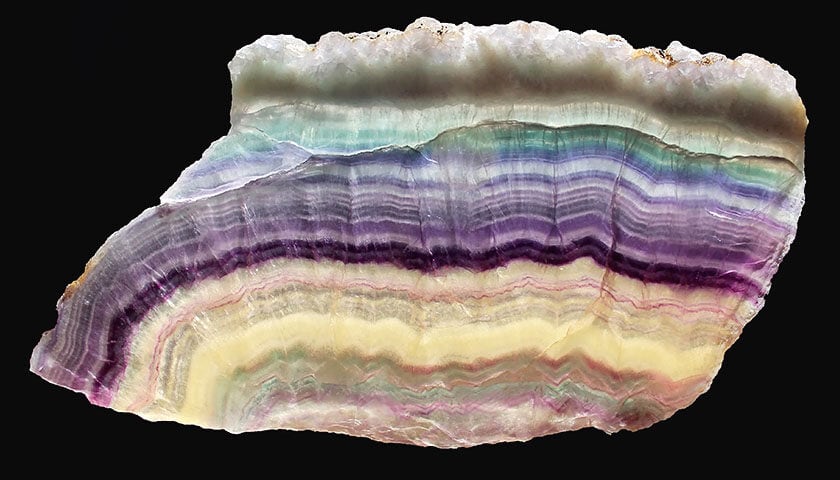
This fluorite displays a multitude of colors within the same specimen, often including green, purple, blue, and clear. Each band of color is a different chapter in the stone’s story, a record of the changing conditions as the crystal formed. Holding a piece of Rainbow Fluorite is like holding a piece of a rainbow in your hand, a tangible piece of the magic and wonder of the natural world.
9. Clear Fluorite
Imagine a crystal clear pool of water, untouched and serene. Now, imagine that tranquility captured forever within a gemstone. This is the essence of Clear Fluorite. This variety is transparent, allowing light to pass through unimpeded, resulting in a crystal that is as pure and clear as a mountain spring. Clear Fluorite is often used in lenses and other optical applications, a testament to its clarity and purity. It’s like holding a piece of the clear sky in your hand, a window into the world of the unseen.
10. Pink Fluorite
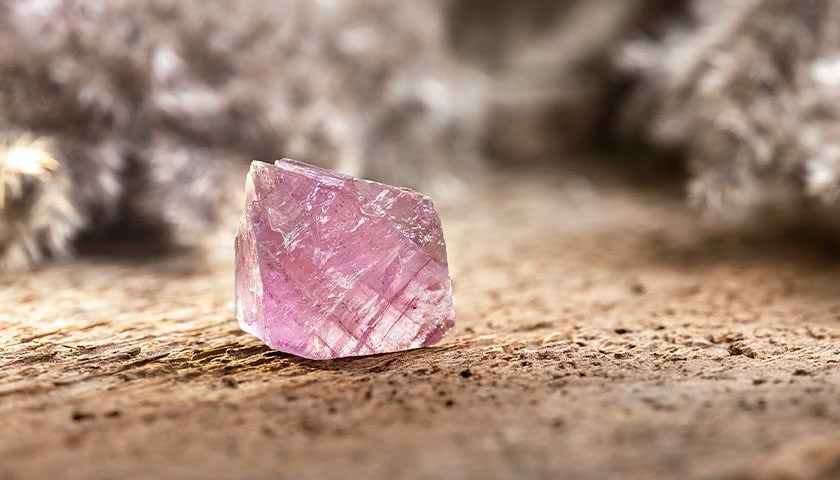
We step into the world of Pink Fluorite, a variety that is as charming as it is rare. The color can range from a light, almost blush pink to a vibrant, rosy hue. Often associated with love and healing, Pink Fluorite is a reminder of the softer side of nature, the gentle caress of a spring breeze, or the warm glow of a setting sun. Each piece is a treasure, a piece of the rosy dawn forever captured within a crystal.
11. Yellow Fluorite

Yellow Fluorite: a variety that shines with the warmth of the sun. The color can range from a light, lemony yellow to a deep, golden hue. Often associated with unity and intellectual development, Yellow Fluorite is a beacon of light and knowledge, a piece of the sun forever captured within a crystal. It’s like holding a piece of sunshine in your hand, a tangible reminder of the warmth and light that knowledge can bring.
12. Red Fluorite
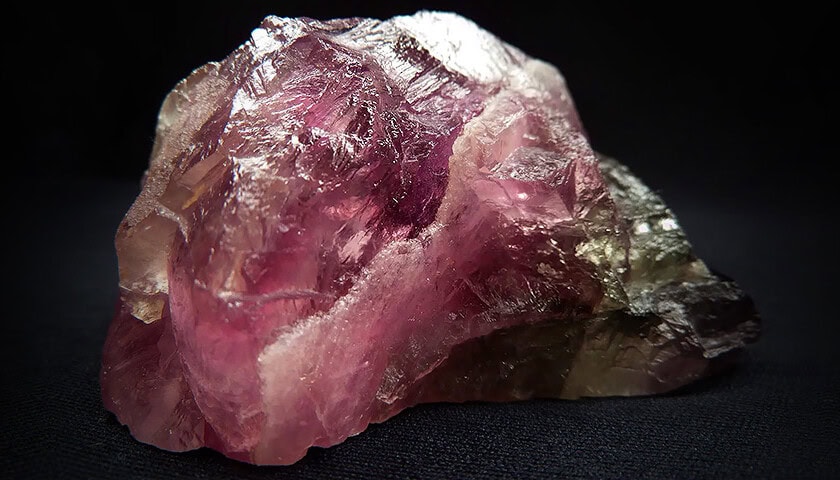
Red Fluorite is less common and can range from a light pinkish-red to a deep, almost ruby red. Red Fluorite is a testament to the passion and intensity that can be found in the natural world. Each piece is a spark, a piece of the fiery sunset forever captured within a crystal.
13. Black Fluorite
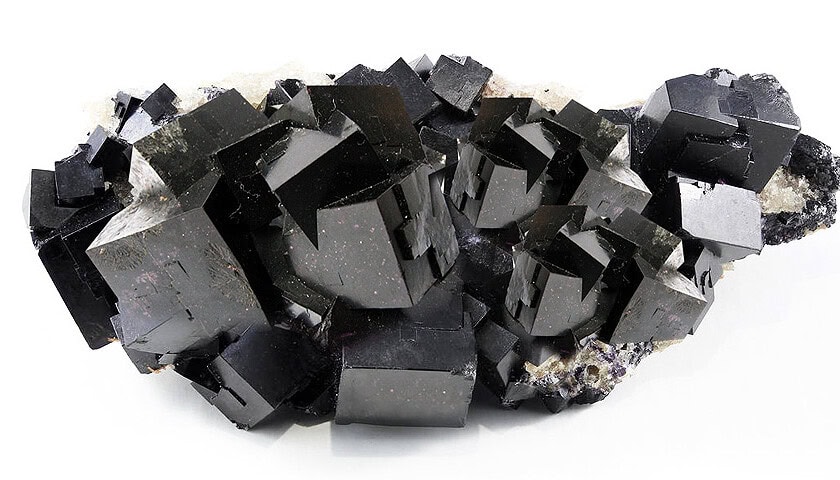
Our journey now takes us into the depths of Black Fluorite, a variety that is as mysterious as the night sky. True black fluorite is rare, but when found, it is a sight to behold. More commonly, fluorite may appear black due to inclusions or impurities, or it may be a very dark purple that appears black. Each piece of Black Fluorite is a piece of the night sky forever captured within a crystal, a tangible reminder of the mysteries and wonders of the universe.
14. Orange Fluorite
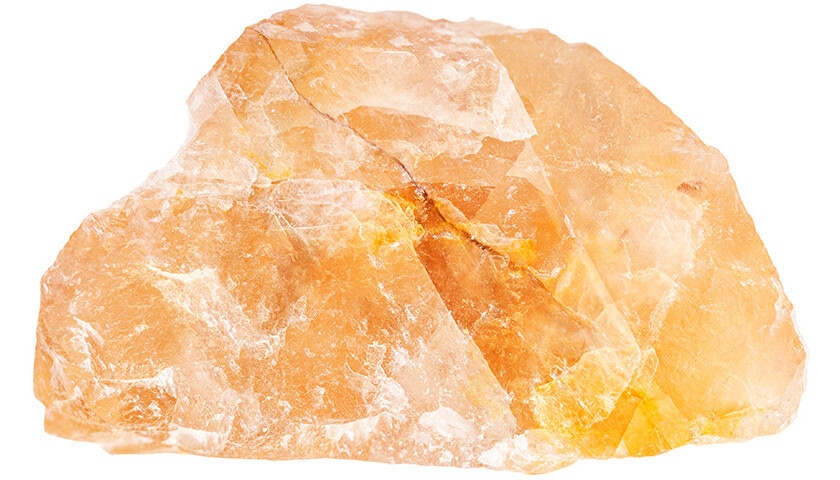
This variety is less common but shines with the warmth and energy of a glowing ember. The color can range from a light, almost peachy orange to a deep, vibrant orange. Orange Fluorite is a testament to the warmth and vitality of the natural world, a piece of the glowing sunset forever captured within a crystal.
15. Brown Fluorite
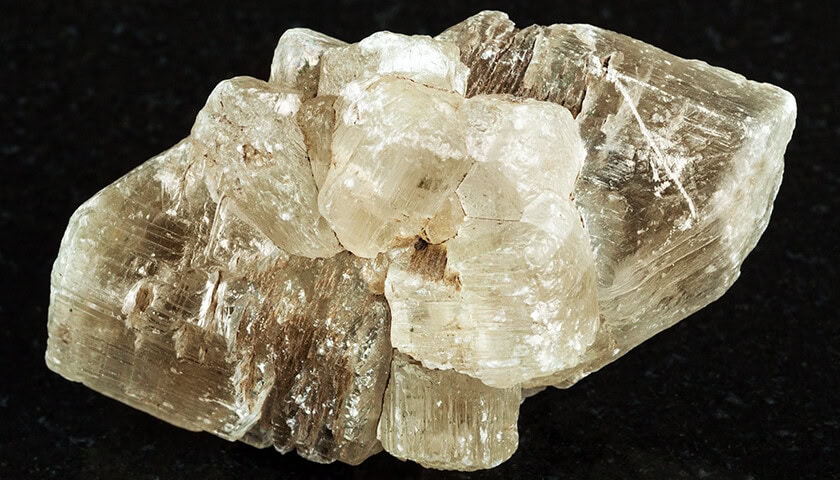
Finally, we arrive at Brown Fluorite, a variety that embodies the richness and depth of the earth. The color can range from a light, almost beige color to a deep, rich brown. Brown Fluorite is a reminder of the strength and stability of the earth, a piece of the fertile soil forever captured within a crystal.
Fluorite Meaning and Symbolism: A Stone of Protection and Healing

Fluorite, with its mesmerizing array of colors, is more than just a beautiful gemstone. It’s a stone steeped in meaning and symbolism, a stone believed to offer protection and healing.
Imagine holding a piece of fluorite in your hand. Feel its smooth surface, gaze at its vibrant colors. This isn’t just a stone; it’s a symbol of protection. For centuries, people have believed that fluorite can act as a shield, protecting its wearer from negative energies. It’s like having a personal guardian, a colorful warrior that stands between you and the world.
But fluorite isn’t just a shield; it’s also a healer. It’s believed to bring order to chaos, to soothe the mind and heal the spirit. Picture a whirlwind of thoughts, a storm of emotions. Now, imagine them calming, settling, becoming still. That’s the healing power of fluorite. It’s like a balm for the soul, a rainbow-colored remedy for the trials and tribulations of life.
Fluorite Healing Properties

Emotional Benefits of Fluorite: A Rainbow of Healing
- Fluorite is believed to bring emotional balance and harmony.
- It can help in managing complex emotions and fostering inner peace.
- Fluorite is often associated with enhanced creativity and clarity of mind.
Dive into the world of fluorite, a gemstone that’s like a rainbow captured in stone. Each color in this vibrant mineral is a note in a symphony of healing, a melody that resonates with our emotional selves.
Imagine holding a piece of fluorite, feeling its smooth surface, gazing at its array of colors. It’s not just a stone; it’s an emotional balancer. Fluorite is believed to harmonize the heart with the mind, ensuring that your emotions and thoughts are in sync. It’s like having an emotional conductor, orchestrating a beautiful harmony within you.
But the emotional benefits of fluorite don’t stop there. This gemstone is also known to help manage complex emotions. Picture a whirlwind of feelings, a storm of emotions. Now, imagine them calming, settling, becoming still. That’s the power of fluorite. It’s like a balm for the soul, soothing your emotions and fostering inner peace.
And let’s not forget about creativity. Fluorite is often associated with enhanced creativity and clarity of mind. Imagine a wellspring of ideas, a fountain of creativity, all sparked by this vibrant stone. It’s like having a muse in the form of a gemstone, inspiring you to create and innovate.
Spiritual Benefits of Fluorite

- It can help in connecting with the universe and enhancing intuition.
- Fluorite is often associated with protection from negative energies.
Step into the spiritual realm with fluorite, a gemstone that’s like a beacon of light in the spiritual journey. Each color in this vibrant mineral is a step in a path of spiritual growth and connection, a journey that resonates with our inner selves.
Imagine holding a piece of fluorite, feeling its cool surface, gazing at its array of colors. It’s not just a stone; it’s a spiritual balancer. Fluorite is believed to align your spiritual energy, creating a sense of balance and unity. It’s like having a spiritual guide, leading you towards a path of growth and enlightenment.
But the spiritual benefits of fluorite don’t stop there. This gemstone is also known to help connect with the universe. Picture a cosmic connection, a spiritual link with the universe. That’s the power of fluorite. It’s like a cosmic bridge, connecting you with the universe and enhancing your intuition.
And let’s not forget about protection. Fluorite is often associated with protection from negative energies. Imagine a shield of light, a barrier against negativity, all created by this vibrant stone. It’s like having a spiritual guardian, protecting you on your spiritual journey.
Fluorite Metaphysical Properties

- Fluorite is believed to have powerful metaphysical properties, acting as a bridge between the mind and the spirit.
- It is associated with spiritual awakening, protection, and the enhancement of intuitive abilities.
- Fluorite is often used in meditation and energy work.
Step into the mystical world of fluorite, a gemstone that’s like a bridge between the mind and the spirit. Each color in this vibrant mineral is a beacon on a journey of metaphysical exploration, a path that resonates with our deepest selves.
Imagine holding a piece of fluorite, feeling its cool surface, gazing at its array of colors. It’s not just a stone; it’s a spiritual awakener. Fluorite is believed to stimulate the third eye chakra, the energy center associated with intuition and spiritual awareness. It’s like having a spiritual torch, illuminating the path to awakening and enlightenment.
But the metaphysical properties of fluorite don’t stop there. This gemstone is also known to offer protection. Picture a shield of light, a barrier against negativity, all created by this vibrant stone. That’s the power of fluorite. It’s like having a metaphysical guardian, protecting you on your spiritual journey.
Fluorite is often associated with the enhancement of intuitive abilities. Imagine a wellspring of insight, a fountain of wisdom, all sparked by this vibrant stone. It’s like having a sixth sense, guiding you towards truth and understanding.
Fluorite Chakra and Zodiac Connection
The Royal Elegance of Blue John Fluorite
Blue John Fluorite, with its bands of royal purple and blue, is a stone of the Third Eye Chakra, enhancing intuition and clarity. It’s a perfect companion for Aquarians, encouraging their innovative thinking and visionary spirit.
The Rare Radiance of Yttrofluorite
Yttrofluorite is a unique variety that connects with the Crown Chakra, promoting spiritual connection and divine wisdom. This rare gem resonates with Sagittarians, enhancing their philosophical nature and love for exploration.
The Mysterious Allure of Antozonite
Antozonite, or “Stinkspar,” with its dark hues, is linked to the Root Chakra, grounding energies and promoting stability. It’s a powerful ally for Capricorns, enhancing their practicality and discipline.
The Luminous Charm of Chlorophane
Chlorophane, the glowing fluorite, resonates with the Heart Chakra, promoting love and compassion. This radiant stone is a perfect match for Geminis, enhancing their adaptability and communication skills.
The Enchanting Dance of Color Change Fluorite
Color Change Fluorite is a magical stone that connects with the Crown Chakra, promoting spiritual transformation. It’s a wonderful companion for Virgos, encouraging their analytical minds and adaptability.
The Verdant Vitality of Green Fluorite
Green Fluorite, with its lush hues, is linked to the Heart Chakra, promoting healing and emotional balance. It’s a nurturing stone for Librans, enhancing their love for harmony and balance.
The Majestic Depth of Purple Fluorite
Purple Fluorite is a stone of the Third Eye Chakra, enhancing intuition and spiritual awareness. It’s a wonderful ally for Pisces, encouraging their dreamy nature and spiritual depth.
The Spectacular Spectrum of Rainbow Fluorite
Rainbow Fluorite, with its multitude of colors, connects with various chakras, promoting overall balance and harmony. This vibrant stone resonates with all zodiac signs, enhancing their inherent qualities.
The Serene Purity of Clear Fluorite
Clear Fluorite is a stone of the Crown Chakra, promoting clarity of thought and spiritual connection. It’s a perfect companion for Aquarians, enhancing their innovative thinking and visionary spirit.
The Gentle Warmth of Pink Fluorite
Pink Fluorite, with its soft hues, is linked to the Heart Chakra, promoting love and compassion. It’s a nurturing stone for Taurians, enhancing their love for beauty and comfort.
The Sunny Radiance of Yellow Fluorite
Yellow Fluorite is a stone of the Solar Plexus Chakra, promoting personal power and intellectual development. It’s a wonderful ally for Leos, enhancing their sunny disposition and leadership qualities.
The Fiery Passion of Red Fluorite
Red Fluorite is linked to the Root Chakra, promoting vitality and grounding energies. It’s a powerful stone for Aries, enhancing their courage and pioneering spirit.
The Deep Mystery of Black Fluorite
Black Fluorite, with its dark allure, is a stone of the Root Chakra, promoting protection and grounding. It’s a perfect companion for Scorpios,enhancing their mysterious nature and transformative qualities.
The Vibrant Energy of Orange Fluorite
Orange Fluorite is a stone of the Sacral Chakra, promoting creativity and emotional balance. It’s a wonderful ally for Cancers, enhancing their nurturing nature and emotional depth.
The Earthy Richness of Brown Fluorite
Brown Fluorite, with its earthy hues, is linked to the Root Chakra, promoting grounding and stability. It’s a nurturing stone for Virgos, enhancing their practical nature and love for earthly pleasures.
How to Use Fluorite
- Meditating with Fluorite: Learn how Fluorite, the “Master Healer”, can supercharge your meditation practice and open doors to deeper consciousness.
- Fluorite and Feng Shui: Discover how the ancient art of Feng Shui combines with Fluorite’s healing properties to harmonize your space.
- Fluorite: Your Home and Office Ally: Unearth how incorporating Fluorite at home and work can foster positive energy and productivity.
- Fluorite: A Heart Stone: Explore the mysterious and potent ways Fluorite can strengthen your relationships and attract love in your life.
A Stone for the Soul: Meditating with Fluorite
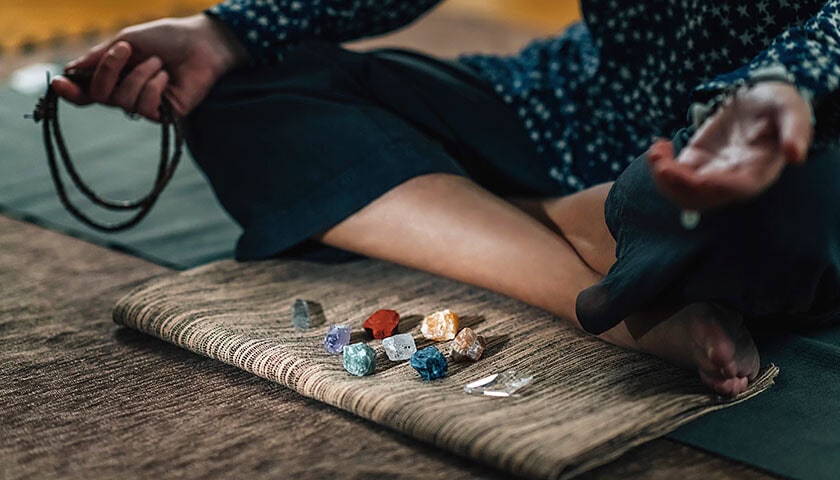
Alright, let’s get straight into it! Picture a quiet space, lit only by the delicate glow of a single Fluorite crystal. Its soft, mesmerizing hues of green, purple, blue, and yellow seep into the room, calming your nerves, quieting your thoughts, and urging you to settle into a profound state of tranquility.
In the silent chorus of your thoughts, Fluorite sings the loudest, allowing you to focus like never before. Its resonating energy harmonizes with your mind, giving you a sense of being plugged into an infinite energy source. Fluorite, often known as the “Master Healer”, is said to cleanse and stabilize the aura, absorbing and neutralizing negative energy and stress. So as you hold it in your hand or keep it nearby during your meditation, you’ll find yourself drawn into a deep well of inner peace and spiritual awareness.
The Harmony Stone: Fluorite Meets Feng Shui

Ever walked into a room and felt a sudden shift in your mood? That’s the unseen energy at play, my friend, and Fluorite is just the thing to harmonize these vibes.
In Feng Shui, Fluorite is often called the “Rainbow Keeper”, a guardian of positive energy. Placing this stone in your space, particularly in areas where you want to concentrate, will invite clarity and focus. A strategically placed Fluorite can attract prosperity and eliminate any lingering negative vibes.
Try placing Fluorite near your workstation, or in the wealth corner of your living room (which is the farthest left corner from your front door, by the way). Watch how the energy shifts, becoming more peaceful, inviting, and – I dare say – a bit more joyous.
Your Personal Energy Booster: Fluorite at Home and Work

Now, let’s get into the nitty-gritty. Can you use Fluorite at home and work? Absolutely!
Imagine yourself entering your home or office, and there it sits – a beautiful Fluorite crystal. As the day’s stress tries to cling to you, Fluorite says “No way!” It neutralizes that negative energy, acting like your personal bodyguard against stress and electromagnetic smog.
Consider it your little slice of zen in a chaotic world. Whether you’re working on a deadline, or simply relaxing after a long day, Fluorite is the steadfast companion that grounds your energy, enhances your focus, and gently reminds you that you’ve got this!
Love’s Favorite Stone: Fluorite and Relationships
If you’re searching for love or looking to infuse more harmony into your relationships, Fluorite’s got your back. This crystal, with its gentle vibrations and mesmerizing colors, is a powerhouse for the heart.
It helps heal emotional wounds, enabling you to move past hurts and embrace love anew. Fluorite enhances mental clarity, helping you understand your feelings and those of others, leading to healthier, more open communication.
Wearing Fluorite Jewelry
Drape Your Heart in Magic: Fluorite Necklaces
Picture this. You’re strolling along a bustling street, a Fluorite necklace swinging gently against your heart. The stunning hues of purple, blue, and green encapsulated within its crystalline structure glint in the sunlight, catching the eye of every passerby. But more than just a striking piece of jewelry, this Fluorite necklace is your personal amulet of protection and grounding, soaking up the day’s stress and replacing it with calm, focused energy.
Rings of Radiance: Fluorite on Your Finger
Have you ever thought about the power your hands hold? Now, imagine that power amplified with a Fluorite ring. As you go about your day, every hand gesture, every touch, every handshake becomes a chance for the Fluorite on your finger to work its magic. It’s like having a constant stream of positive energy, right at your fingertips!
The Wrist Charmer: Fluorite Bracelets
A Fluorite bracelet is more than just a fashion statement – it’s an energy transformer! With each movement of your wrist, you’re swirling with the calming and balancing energies of this vibrant stone. Think of it as your own personal mood booster, right there on your wrist, adding a splash of color to your outfit and your day!
Your Amulet of Strength: Fluorite Pendants
Here’s the thing about Fluorite pendants: they’re gorgeous, sure, but they’re also your secret weapon against negativity. Worn close to the heart, a Fluorite pendant acts as your shield, soaking up any negativity that dares to come your way. All the while, its radiating energy is infusing your aura with an ethereal glow. Pretty cool, huh?
A Hint of Glamour: Fluorite Earrings
Let’s not forget about Fluorite earrings. With each gentle swing and sway, they’re radiating healing energy. They’re like little beacons of calm, framing your face, and adding a touch of glamour to your look. And the best part? With every turn of your head, you’re spreading a bit of Fluorite’s harmonizing energy around you.
Versatility in Vibrance: Fluorite Beads
And then we have Fluorite beads. The chameleons of the jewelry world, these beads are as versatile as they come. String them into a necklace, a bracelet, or even a pair of earrings. Each bead is like a tiny capsule of Fluorite’s calming, stress-relieving energy. So, go ahead, create your personal piece of Fluorite magic!
Fluorite Cleansing and Charging
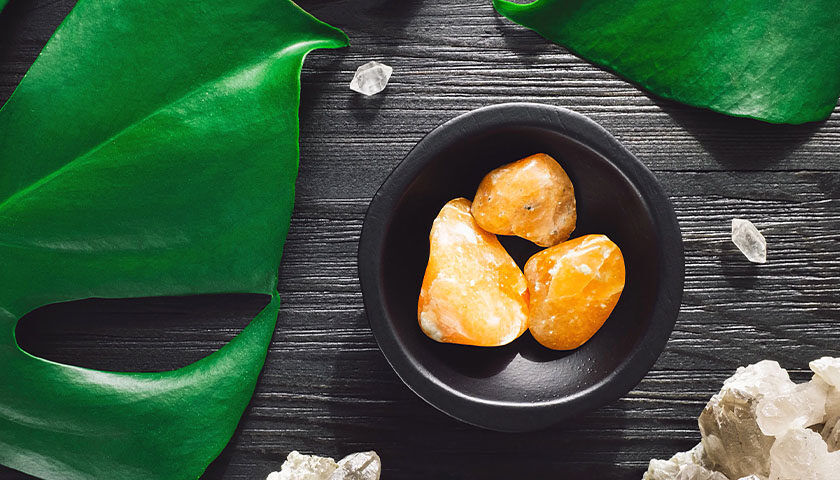
- Cleansing Fluorite with Water: The most common and simple method, yet it has its cautions.
- Salt: A Traditional Fluorite Cleanser: An ancient method steeped in myth and practicality.
- Sage and Incense: For those seeking a more ceremonial approach to cleansing Fluorite.
- Harnessing the Power of the Sun and Moon: How these celestial bodies can charge your Fluorite.
- Potential Risks and Best Practices: An important guide to treating your Fluorite right.
1. Quenching Crystals: Cleansing Fluorite with Water
Picture this: you’re standing by a clear, running stream, the sun peeking through the leaves, casting dapples of light on the cool, clear water. In your hand, you hold a piece of Fluorite, its hues vibrant against the green of the woods. You gently dip the crystal into the water, watching as the liquid swirls around it, taking with it any negative energies.
Cleansing Fluorite with water is as simple as it sounds, but it does come with a few precautions. Be sure to use cool, not hot water, and avoid harsh chemicals. This method mimics the natural erosion process, and the visual metaphor of water washing away negativity is strong, but remember that Fluorite is a soft mineral and over time, prolonged water exposure could damage it.
2. The Salt of the Earth: Cleansing Fluorite with Salt
Let’s journey back in time, to when salt was more valuable than gold. It’s been used for centuries to cleanse and purify, and Fluorite is no exception. You can bury your Fluorite in a bowl of sea salt, let it sit overnight, and voila! Cleansed Fluorite, ready to serve you.
Remember though, just as with water, Fluorite can be sensitive to salt, especially if left in it for prolonged periods. And don’t use table salt! The iodine and anti-caking agents in it can damage your beautiful stone.
3. A Ritual of Smoke: Cleansing with Sage and Incense
Here’s where we enter the realm of the ceremonial. Lighting a sage stick or a stick of incense, watching as the smoke rises and dances around your piece of Fluorite, is a ritual as old as time. This method doesn’t just cleanse your Fluorite but also charges it with the positive energies of the sage or incense.
Remember to always use a fireproof dish to catch any ashes and never leave your burning sage or incense unattended. And don’t worry if you don’t see immediate changes in your Fluorite. This method works over time, gradually aligning your Fluorite with positive energies.
4. The Celestial Cleanse: Charging Fluorite with Sun and Moon
When it comes to charging your Fluorite, the sun and the moon are your best allies. Imagine your Fluorite basking under the soft glow of the moon or the warm rays of the sun, soaking up all that celestial energy.
Placing your Fluorite under the moonlight, especially during a full moon, can supercharge it with calm, healing energy. Sunlight, on the other hand, fills your Fluorite with vibrant, positive energy. But, just like you, Fluorite can get sunburned! So, avoid leaving it out for too long under the harsh midday sun.
5. Heed the Risks, Follow the Practices
Treating your Fluorite right is key to making the most of its healing properties. Remember that while these methods of cleansing and charging can enhance your Fluorite’s energy, they can also potentially damage the crystal if not done properly. Always follow best practices and listen to your intuition – it often knows what’s best for your Fluorite!
How to Care for Fluorite

- Avoiding Extremes: Protect your Fluorite from extreme temperatures.
- Befriend the Soft and Gentle: Avoid Fluorite’s contact with harder gemstones and chemicals.
- Sunshine and Fluorite: Sunlight might not always be Fluorite’s best friend.
- Safe Keeping: Store Fluorite properly to keep it vibrant and energized.
1. Love in the Time of Temperatures: Caring for Fluorite
Picture yourself as a proud parent of a little Fluorite crystal. This little guy is sensitive to extreme heat and cold. So, as tempting as it might be to steam clean it or to let it bathe in a bowl of ice, resist! Extreme temperatures can lead to fractures in Fluorite, or worse, cause it to break. So, always remember the Goldilocks principle for your Fluorite – not too hot, not too cold, just right!
2. Coexistence: Fluorite’s Friendly (and Not-So-Friendly) Companions
Imagine your Fluorite crystal in a room full of other gemstones. In one corner, there’s Diamond, with its perfect 10 on the Mohs hardness scale, chatting with Ruby and Sapphire, both a sturdy 9. Fluorite, with a modest hardness of 4, might feel a bit intimidated!
If Fluorite were to get too close to these harder gemstones, they could potentially scratch or chip it. So, treat Fluorite like the soft and gentle soul it is. Keep it away from harder gemstones, and always take off your Fluorite jewelry before doing any rough work or coming into contact with chemicals. Even household cleaners can cause damage!
3. Sun-Kissed or Sun-Scorched: Fluorite in the Sun
Ah, the glorious sun! While it might be the perfect spot for your sunflower, your Fluorite might not think so. Prolonged exposure to sunlight can cause Fluorite’s vibrant colors to fade. So, as much as you might want to show off your Fluorite in that sunny window, it’s best to find it a nice, shady spot where it can stay cool and colorful.
4. A Safe Haven: Storing Your Fluorite
At the end of the day, when your Fluorite has done its duty, providing you with its calming energy and serene vibes, it deserves a good night’s rest. A soft, clean cloth or pouch is the perfect bed for your Fluorite. It’ll keep it safe from scratches and dust, and it’ll ensure that your Fluorite is ready to serve you day after day.
The Many Faces of Fluorite: Exploring its Shapes and Forms
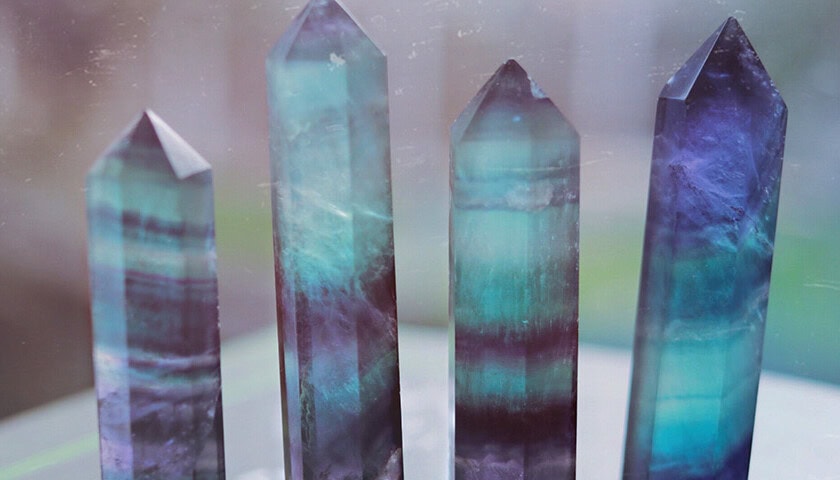
Fluorite in the Raw: Tumbled Stones
Just imagine, each Fluorite tumbled stone started its journey deep within the Earth, tucked away in dark corners, subjected to immense pressures and temperatures. These stones are then “tumbled” in a machine with grit and water, softening their rough edges and giving them a beautiful polish. Each tumbled Fluorite holds a piece of that primordial Earth energy within it, a tangible connection to our planet’s fiery heart. They’re perfect for carrying in your pocket or using in energy grids!
Smooth Operator: Polished Fluorite Stones
Polished Fluorite stones are a thing of beauty. Their smooth surfaces not only make them incredibly tactile but also enhance their internal patterns, making the beauty of Fluorite even more enchanting. In mythology, it’s believed that polished stones, with their refined beauty, can connect us to higher spiritual realms. A polished Fluorite stone can be a physical manifestation of that journey towards spiritual enlightenment.
Embracing the Imperfect: Rough Fluorite Stones
Rough Fluorite stones are Mother Nature’s masterpieces, unaltered by human hands. They retain their original “skin”, a testament to their journey from the heart of the Earth to your hands. In folklore, rough stones are considered to carry raw, untamed energy, and what could be more exciting than holding a piece of that untamed power?
Fluorite, Come Full Circle: Fluorite Spheres
Fluorite spheres represent the unity of the universe. Just imagine a Fluorite sphere in your hand – there’s no beginning or end. This continuity is reflected in its energy, making Fluorite spheres perfect tools for meditation and healing, guiding you towards wholeness and completion.
Wearing Your Heart on Your… Stone? Fluorite Hearts
Fluorite hearts are more than just pretty pieces. They’re love, crystallized! In the realm of crystal healing, Fluorite hearts are believed to open and heal the heart chakra, promoting love, forgiveness, and emotional balance. Holding a Fluorite heart can be like a warm, reassuring hug from a loved one.
Power Pointed: Fluorite Pyramids
Fluorite pyramids, with their ancient shape, seem to echo the mysteries of the Pyramids of Egypt. Mythologically, pyramids are believed to harness cosmic energy, focusing it through their apex. A Fluorite pyramid could be your personal conduit of this cosmic energy, guiding you towards your highest truth.
Directing the Flow: Fluorite Wands
Imagine, with a Fluorite wand in your hand, you’re a master of energy, directing its flow, healing blockages, and balancing chakras. In mythology, wands are seen as powerful tools of transformation. With a Fluorite wand, you become an active participant in your healing journey.
In the Palm of Your Hand: Fluorite Palm Stones
The magic of Fluorite palm stones lies in their size. They fit perfectly in your palm, their smooth surface warming against your skin, their calming energy seeping into your being. They’re perfect for moments of stress or anxiety, a tangible reminder of peace and balance.
Compact Beauty: Fluorite Cabochons
Fluorite cabochons are small, polished stones, usually encased in a setting. Despite their size, they carry the full energy of Fluorite, a splash of color and calm in your day. Wearing a Fluorite cabochon can be a personal secret, a small piece of peace that accompanies you wherever you go.
Fluorite vs Amethyst: A Tale of Two Gemstones
- Both fluorite and amethyst can exhibit beautiful purple hues.
- Amethyst is a variety of quartz, while fluorite is a halide mineral.
- Amethyst is harder than fluorite, making it more suitable for certain types of jewelry.
Imagine a gemstone that captures the enchanting hues of purple, a stone that can range from a light lavender to a deep violet. You might be thinking of amethyst, but there’s another gemstone that shares this captivating color – fluorite.
Fluorite and amethyst, while both can exhibit beautiful purple hues, are quite different in their composition and properties. Amethyst is a variety of quartz, a silicate mineral, while fluorite is a halide mineral composed of calcium fluoride. This difference in composition results in different physical properties. Amethyst is harder than fluorite, rating a 7 on the Mohs scale compared to fluorite’s 4. This makes amethyst more suitable for all types of jewelry, while fluorite is best for pieces that won’t receive heavy wear.
In terms of value, amethyst can range from $2 to $30 per carat, while fluorite ranges from $2 to $60 per carat. The price depends on factors such as color, size, and overall quality.
Both stones have been associated with spiritual and healing properties. Amethyst is often associated with peace, balance, and inner strength, while fluorite is believed to bring emotional balance and enhance intuition.
Fluorite vs Calcite: Comparing the Colors of the Rainbow
- Both fluorite and calcite come in a variety of colors.
- Calcite is a carbonate mineral, while fluorite is a halide mineral.
- Both stones have perfect cleavage, but in different forms.
Imagine a gemstone that comes in a variety of colors, a stone that can be green, blue, yellow, or even clear. You might be thinking of fluorite, but there’s another gemstone that shares this rainbow of colors – calcite.
Fluorite and calcite, while both can exhibit a variety of colors, are quite different in their composition and properties. Calcite is a carbonate mineral composed of calcium carbonate, while fluorite is a halide mineral composed of calcium fluoride. This difference in composition results in different physical properties. Both stones have perfect cleavage, but calcite cleaves in three directions to form rhombohedra, while fluorite cleaves in four directions to form octahedra.
In terms of value, calcite is generally less expensive than fluorite, with most specimens costing less than $10. Fluorite, on the other hand, can range from $2 to $60 per carat, depending on factors such as color, size, and overall quality.
Both stones have been associated with healing properties. Calcite is often associated with cleansing and revitalizing, while fluorite is believed to bring emotional balance and enhance intuition.
Fluorite vs Quartz: A Study in Clarity
- Both fluorite and quartz can be clear and colorless.
- Quartz is a silicate mineral, while fluorite is a halide mineral.
- Quartz is harder than fluorite
Imagine a gemstone that is clear and colorless, a stone that captures the essence of purity and clarity. You might be thinking of quartz, but there’s another gemstone that shares this characteristic – fluorite.
Fluorite and quartz, while both can be clear and colorless, are quite different in their composition and properties. Quartz is a silicate mineral composed of silicon dioxide, while fluorite is a halide mineral composed of calcium fluoride. This difference in composition results in different physical properties. Quartz is harder than fluorite, rating a 7 on the Mohs scale compared to fluorite’s 4. This makes quartz more suitable for all types of jewelry, while fluorite is best for pieces that won’t receive heavy wear.
In terms of value, clear quartz is generally less expensive than colored varieties, with most specimens costing less than $10. Fluorite, on the other hand, can range from $2 to $60 per carat, depending on factors such as color, size, and overall quality.
Fluorite vs Tourmaline: A Spectrum of Possibilities
- Both fluorite and tourmaline come in a variety of colors.
- Tourmaline is a boron silicate mineral, while fluorite is a halide mineral.
- Tourmaline is harder than fluorite
Imagine a gemstone that comes in a variety of colors, a stone that can be green, blue, pink, or even black. You might be thinking of tourmaline, but there’s another gemstone that shares this spectrum of colors – fluorite.
Fluorite and tourmaline, while both can exhibit a variety of colors, are quite different in their composition and properties. Tourmaline is a boron silicate mineral, while fluorite is a halide mineral composed of calcium fluoride. This difference in composition results in different physical properties. Tourmaline is harder than fluorite, rating a 7-7.5 on the Mohs scale compared to fluorite’s 4. This makes tourmaline more suitable for all types of jewelry, while fluorite is best for pieces that won’t receive heavy wear.
In terms of value, tourmaline can range from $50 to $500 per carat, while fluorite ranges from $2 to $60 per carat. The price depends on factors such as color, size, and overall quality.
Fluorite vs Aquamarine: A Dance of Blues and Greens
- Both fluorite and aquamarine can exhibit beautiful blue to green hues.
- Aquamarine is a variety of beryl, while fluorite is a halide mineral.
- Aquamarine is harder than fluorite, making it more suitable for certain types of jewelry.
Imagine a gemstone that captures the serene hues of the sea, a stone that can range from a pale blue to a vibrant green. You might be thinking of aquamarine, but there’s another gemstone that shares these calming colors – fluorite.
Fluorite and aquamarine, while both can exhibit beautiful blue to green hues, are quite different in their composition and properties. Aquamarine is a variety of beryl, a silicate mineral, while fluorite is a halide mineral composed of calcium fluoride. This difference in composition results in different physical properties. Aquamarine is harder than fluorite, rating a 7.5 to 8 on the Mohs scale compared to fluorite’s 4. This makes aquamarine more suitable for all types of jewelry, while fluorite is best for pieces that won’t receive heavy wear.
In terms of value, aquamarine can range from $100 to $500 per carat, while fluorite ranges from $2 to $60 per carat. The price depends on factors such as color, size, and overall quality.
Fluorite vs Jade: A Study in Greens
- Both fluorite and jade can exhibit beautiful green hues.
- Jade refers to two different minerals, nephrite and jadeite, while fluorite is a halide mineral.
- Jade is harder than fluorite
Imagine a gemstone that captures the vibrant hues of nature, a stone that can range from a pale to a deep green. You might be thinking of jade, but there’s another gemstone that shares this verdant color – fluorite.
Fluorite and jade, while both can exhibit beautiful green hues, are quite different in their composition and properties. Jade refers to two different minerals, nephrite and jadeite, while fluorite is a halide mineral composed of calcium fluoride. This difference in composition results in different physical properties. Jade is harder than fluorite, rating a 6 to 7 on the Mohs scale compared to fluorite’s 4. This makes jade more suitable for all types of jewelry, while fluorite is best for pieces that won’t receive heavy wear.
In terms of value, jade can range from $10 to $3,000 per carat, while fluorite ranges from $2 to $60 per carat. The price depends on factors such as color, size, and overall quality.
Fluorite vs Alexandrite: A Play of Colors
- Both fluorite and alexandrite can exhibit a variety of colors.
- Alexandrite is a variety of chrysoberyl, while fluorite is a halide mineral.
- Alexandrite is much harder than fluorite, making it more suitable for certain types of jewelry.
Imagine a gemstonethat displays a mesmerizing play of colors, a stone that can change its hue depending on the lighting. You might be thinking of alexandrite, but there’s another gemstone that shares this captivating characteristic – fluorite.
Fluorite and alexandrite, while both can exhibit a variety of colors, are quite different in their composition and properties. Alexandrite is a variety of chrysoberyl, an oxide mineral, while fluorite is a halide mineral composed of calcium fluoride. This difference in composition results in different physical properties. Alexandrite is much harder than fluorite, rating an 8.5 on the Mohs scale compared to fluorite’s 4. This makes alexandrite more suitable for all types of jewelry, while fluorite is best for pieces that won’t receive heavy wear.
In terms of value, alexandrite is one of the most expensive gemstones, with high-quality stones costing up to $15,000 per carat. Fluorite, on the other hand, is much more affordable, ranging from $2 to $60 per carat. The price depends on factors such as color, size, and overall quality.
Fluorite vs Citrine: A Contrast of Colors
- Fluorite can exhibit a variety of colors, while citrine is known for its yellow to brownish hues.
- Citrine is a variety of quartz, while fluorite is a halide mineral.
- Citrine is harder than fluorite
Imagine a gemstone that captures the warm hues of the sun, a stone that can range from a pale yellow to a rich brown. You might be thinking of citrine, but there’s another gemstone that can share this sunny color – fluorite.
Fluorite and citrine, while they can exhibit similar yellow hues, are quite different in their composition and properties. Citrine is a variety of quartz, a silicate mineral, while fluorite is a halide mineral composed of calcium fluoride. This difference in composition results in different physical properties. Citrine is harder than fluorite, rating a 7 on the Mohs scale compared to fluorite’s 4. This makes citrine more suitable for all types of jewelry, while fluorite is best for pieces that won’t receive heavy wear.
In terms of value, citrine is generally affordable, with most specimens costing less than $30 per carat. Fluorite, on the other hand, can range from $2 to $60 per carat, depending on factors such as color, size, and overall quality.
Frequently Asked Questions About Fluorite
What is fluorite?
Fluorite is a halide mineral composed of calcium fluoride. Fluorite can come in a variety of colors, including colorless, white, purple, blue, green, yellow, and even black.
What causes the different colors in fluorite?
The different colors in fluorite are usually caused by various impurities in the mineral and exposure to radiation.
Where does the name fluorite come from?
The name ‘fluorite’ comes from the Latin word ‘fluere’, meaning ‘to flow’, which refers to its use as a flux in metal smelting.
What is the hardness of fluorite?
Fluorite has a hardness of 4 on the Mohs scale, making it a relatively soft mineral.
What is the crystal structure of fluorite?
Fluorite has an isometric crystal structure and is known for its cubic and octahedral crystal habits.
What is the phenomenon of fluorescence in fluorite?
Fluorescence is a property where fluorite emits light upon exposure to ultraviolet light. The term ‘fluorescence’ was derived from fluorite.
Where is fluorite found?
Major deposits of fluorite are found in China, Mexico, and South Africa, among other places.
Can fluorite be used as a gemstone?
Yes, fluorite is often cut and polished to be used as a gemstone due to its wide range of colors and attractive luster.
What is the price range of fluorite per carat?
The price of fluorite can range from $2 to $60 per carat, depending on color, size, and quality.
Can fluorite be submerged in water?
Yes, fluorite can be submerged in water, but not for long periods as this can damage the stone.
Is fluorite a sun-safe crystal?
No, prolonged exposure to sunlight can fade the color of fluorite.
What special care does fluorite require?
Fluorite should be kept away from harsh chemicals and prolonged exposure to heat and sunlight. It should also not be submerged in water for long periods.
Is fluorite a birthstone?
No, fluorite is not traditionally considered a birthstone.
What chakra is fluorite associated with?
Fluorite is often associated with the third eye and heart chakras, but its wide rangeof colors means it can be used with all chakras.
What is blue john fluorite?
Blue John is a variety of fluorite that exhibits bands of purple-blue or yellow. It is found only in Derbyshire, England.
What is the difference between fluorite and amethyst?
While both fluorite and amethyst can be purple, they are different minerals with different properties. Amethyst is a variety of quartz, while fluorite is a halide mineral.
What is the largest fluorite crystal ever found?
The largest fluorite crystal ever found was over 2 meters in diameter and weighed approximately 16 tons. It was discovered in Russia.
Is fluorite radioactive?
While fluorite itself is not radioactive, it can sometimes contain trace amounts of radioactive elements as impurities.
Can fluorite change color?
Fluorite can change color under different lighting conditions or when heated, due to a phenomenon known as thermoluminescence.
Can fluorite scratch glass?
No, fluorite cannot scratch glass. Glass has a hardness of 5.5 on the Mohs scale, which is harder than fluorite.
Is fluorite toxic?
Fluorite itself is not toxic, but it can contain trace amounts of harmful elements as impurities. It should not be ingested or used to make elixirs without proper knowledge and precautions.
Can fluorite be used to make glass?
Yes, fluorite is used in the manufacture of certain types of glass, particularly opalescent and specialty glasses.
Can fluorite be used in elixirs?
Due to the potential presence of harmful impurities, fluorite should not be used to make direct-method elixirs. However,it can be used to make indirect-method elixirs where the stone does not come into direct contact with the water.
What is the difference between fluorite and fluorspar?
Fluorite and fluorspar are terms for the same mineral. However, ‘fluorite’ is commonly used in reference to the gemstone, while ‘fluorspar’ is the term used in the industrial and chemical contexts.
What is the cleavage of fluorite?
Fluorite has perfect octahedral cleavage, which means it can be split along planes to form perfect octahedrons.
Is fluorite a precious or semi-precious stone?
Fluorite is considered a semi-precious stone due to its relative abundance and affordability.
What is the difference between fluorite and emerald?
While both fluorite and emerald can be green, they are different minerals with different properties. Emerald is a variety of beryl, while fluorite is a halide mineral.
What is the difference between fluorite and topaz?
While fluorite and topaz can share similar colors, they are different minerals with different properties. Topaz is a silicate mineral, while fluorite is a halide mineral.
What is the streak color of fluorite?
The streak color of fluorite, which is the color of the powder left when it’s rubbed against a rough surface, is usually white.
| Fluorite Physical Properties | |
|---|---|
| Crystal Structure | Isometric |
| Mineral Class | Halides |
| Specific Gravity | 3.18 |
| Formula | CaF2 |
| Hardness | 4 on the Mohs scale |
| Transparency | Transparent to Translucent |
| Chemical Composition | Calcium Fluoride |
| Locations | China, Mexico, South Africa, among others |
| Rarity | Common |
| Can Be Submerged in Water | Yes, but not for long periods |
| Sun Safe Crystal | No, prolonged exposure to sunlight can fade its color |
| Special Care Instructions | Avoid harsh chemicals, avoid prolonged exposure to heat and sunlight |
| Price/Carat | $2 – $60, depending on color, size, and quality |
Please note that the price per carat can vary greatly depending on the specific characteristics of the fluorite, including its color, size, and overall quality. Also, while fluorite can be submerged in water, it should not be left in water for long periods as this can damage the stone. Similarly, fluorite should not be exposed to prolonged sunlight as this can cause its color to fade.
| Fluorite Metaphysical Properties | |
|---|---|
| Chakras | Varies by color (e.g., Purple Fluorite: Third Eye Chakra, Green Fluorite: Heart Chakra) |
| Zodiac Signs | All, with specific resonances depending on color |
| Planets | Mercury |
| Numerical Vibration | 7 and 9 |
| Elements | Air and Water |
| Symbolism | Intuition, Mental Clarity, Aura Cleansing |
| Birthstones | Not a traditional birthstone, but associated with Pisces and Capricorn |
| Affirmations | “I am connected to the universe. My mind is clear and open.” |
| Emotional Conditions | Stress, Anxiety, Mental Fog |
| Spiritual Purposes | Enhancing Intuition, Spiritual Awakening, Energy Cleansing |
| Crystal Combinations | Amethyst for enhanced intuition, Clear Quartz for amplified energy |

